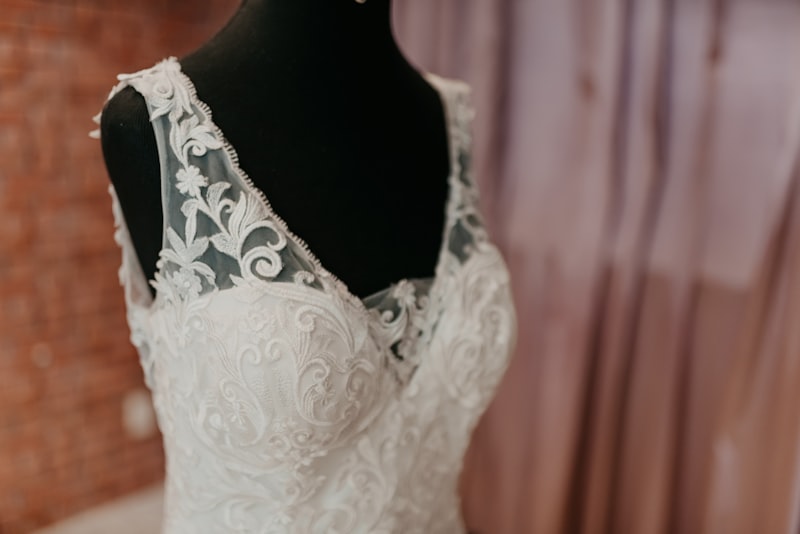Understanding Heritage Factors in Classic Wedding Dress Revival Trends
Understanding Heritage Factors in Classic Wedding Dress Revival Trends
In recent years, the fashion industry has seen a significant revival of classic wedding dress trends, prompting many to explore the heritage factors that influence these styles. This article delves into the rich historical elements that shape modern bridal fashion, shedding light on how cultural traditions and historical influences play a pivotal role in wedding dress design. From the intricate lacework that adorns vintage gowns to the silhouette that defines each era’s bridal wear, heritage factors are essential to understanding today’s trends.
The Importance of Heritage in Fashion Trends
Heritage plays a crucial role in shaping the fashion trends we see today. For wedding dresses, this is particularly relevant as brides around the world seek to connect with their cultural roots and family histories through their attire. Factors such as fabric choices, embellishments, and even the silhouette of the dress are often influenced by traditions passed down through generations. For instance, the use of lace and embroidery has deep-seated origins in many cultures, and these elements are often revived in modern designs.
Classic Styles Making a Comeback
Some classic wedding dress styles are experiencing a renaissance due to their timeless elegance and the nostalgia they invoke. Below, we summarize a few notable trends:
| Style | Heritage Factor | Modern Interpretation |
| A-Line Gowns | Inspired by Victorian and Edwardian dresses, symbolizing femininity. | Contemporary A-line silhouettes with lighter fabrics and minimal embellishments. |
| Ball Gowns | Often associated with royal weddings, representing grandeur and pageantry. | Modern ball gowns are streamlined yet opulent, focusing on less volume and more structure. |
| Sheath Dresses | Stemming from Ancient Greek fashions, showcasing a minimalist aesthetic. | Contemporary sheath dresses often incorporate luxe fabrics and unique cuts. |
Researching Bridal Heritage: The Journey of Styles
To truly appreciate the heritage factors in classic wedding dress revival trends, it’s essential to research how different cultures have influenced these styles over the centuries. Factors such as social status, regional materials, and local customs have all influenced the evolution of bridal fashion. For instance, in regions such as Europe, many wedding dresses feature intricate lacework from local artisans, representing a blend of artistry and tradition.

Impact of Cultural Traditions
Cultural traditions play a significant role in guiding the choices brides make when selecting their wedding dresses. Various cultures have specific customs surrounding the material and color of a wedding dress, and these are often reflective of historical significance. For example:
- White Wedding Dress: Popularized by Queen Victoria in the 19th century, white signifies purity and has now become the most recognized color in Western weddings.
- Red Wedding Dress: In many Asian cultures, including Chinese and Indian traditions, red symbolizes good fortune and happiness, making it a popular choice for brides.
- Patchwork and Quilting: In regions of Africa, heritage often includes vibrant patterns in wedding attire, using patchwork techniques that tell a story or signify community bonds.
Reviving Classic Techniques
As designers look to the past, many are reviving classic techniques that have been forgotten in modern manufacturing processes. Hand-stitched details, artisan lace making, and beading techniques are just a few methods that have found their way back into contemporary bridal fashion. By incorporating these methods, designers not only honor tradition but also offer a more personalized touch to modern bridal gowns.
Bridging the Gap Between Past and Present
Today's brides often seek dresses that connect them to their heritage while expressing their unique style. This intersection of past and present creates an exciting landscape for designers. For instance, we see modern fabrics being employed in traditional silhouettes, blending comfort with nostalgia. This trend encourages brides to choose dresses that reflect who they are, rather than conforming to generic trends.
Environmental Impact and Sustainable Practices
The revival of classic wedding dresses also intertwines with sustainability. Many designers are now focused on creating eco-friendly gowns, repurposing vintage fabrics, or even crafting dresses that can be worn for multiple occasions. This sustainability movement highlights the importance of heritage in a modern context, where respecting history includes making mindful choices about the fabrics and processes used. Brides are increasingly valuing dresses that tell a story rather than just following the latest fashions.
The Role of Social Media in Wedding Dress Trends
Social media has transformed how wedding dress trends are shared and revived. Platforms like Instagram and Pinterest allow brides to showcase their own unique styles while pulling inspiration from the past. This democratization of fashion helps revive classic styles, as brides share their personal narratives related to heritage and tradition.
Conclusion: The Future of Bridal Heritage
The exploration of heritage factors in classic wedding dress revival trends proves that understanding the past is integral to shaping a stylish future. As couples continue to celebrate their unique identities and cultural heritages, we expect to see even more exciting developments in bridal fashion. The revival of these classic styles not only enhances the beauty of the contemporary wedding dress but also fosters a deeper connection to traditions that have shaped brides for generations.
As you consider your own wedding attire, take the time to reflect on the heritage factors that resonate with you. Remember that your wedding dress is not just a piece of clothing; it is a canvas that tells your story and connects you to the rich legacy of bridal fashion.
In summary, when choosing a wedding dress, pay attention to the heritage factors at play, explore various cultural influences, and embrace the sustainability trend to honor both your personal history and the environment. This informed approach will add depth and meaning to your wedding dress selection, making your special day truly unique.
